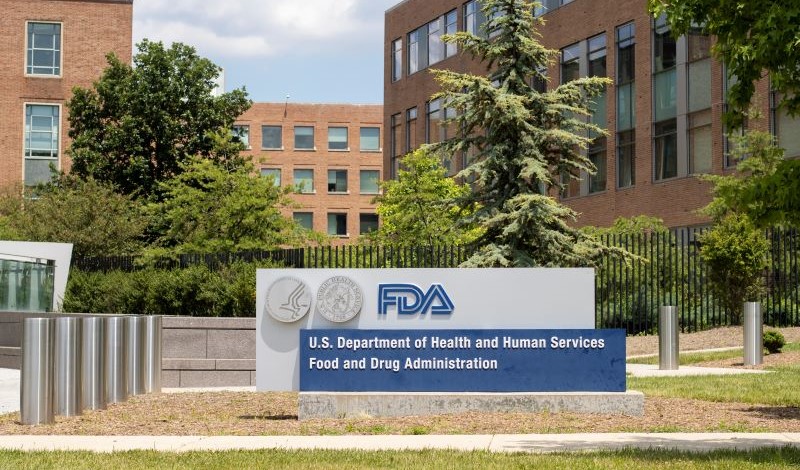
The Supreme Court’s recent unanimous decision on FDA’s tobacco-authorization authority is utterly unremarkable.
Anyone who has practiced food and drug law for a significant period will tell you that if the U.S. Food and Drug Administration (FDA) rejects your marketing application, your best bet is to regroup, perform some more studies, and try again, as judicial review is pointless. FDA has been approving new drug applications since the 1960s, and the leading casebook on food and drug law reports that no new drug applicant has successfully sought judicial reversal of a refusal to approve its application. In January 2024, though, the U.S. Court of Appeals for the Fifth Circuit endorsed a challenge brought by two vaping companies—Triton and Vapetasia—after FDA denied their marketing applications. In FDA v. Wages and White Lion Investments, the U.S. Supreme Court unanimously rejected that decision. The Fifth Circuit’s ruling was remarkable. The Supreme Court’s decision, on the other hand, is much less so.
FDA’s approach to implementing its new tobacco authority was neither new nor surprising; we have seen this movie many times before.
The U.S. Congress gave FDA the authority to regulate tobacco products in 2009. Under its new authority, FDA issued a rule in 2016 that effectively required premarket approval for any e-cigarettes and e-liquids that had not been marketed before February 15, 2007. A provision of the Federal Food, Drug, and Cosmetic Act (FDCA) describes the content of premarket applications and the grounds for denial.
Under this provision, an application must include “full reports of all information, published or known to, or which should reasonably be known to, the applicant, concerning investigations which have been made to show the health risks of such tobacco product and whether such tobacco product presents less risk than other tobacco products.” FDA must deny an application if, based on the information submitted and any other information before the agency concerning that product, FDA finds that “there is a lack of a showing that permitting such tobacco product to be marketed would be appropriate for the protection of the public health.”
The tobacco application contents and agency action provisions track those governing other premarket applications submitted to FDA, such as applications for new drugs, new animal drugs, and certain medical devices. The only difference is that in the case of a tobacco product, a manufacturer may not introduce it until the FDA determines that it is “appropriate for the protection of the public health.”
Before the applications challenged in White Lion were due, FDA issued a guidance document that “communicates FDA’s current thinking on these applications to improve the efficiency of application submission and review.” The agency cautions that “the recommendations in this guidance are non-binding.” Furthermore, when the agency reviews applications, “it will base decisions on the obligations that arise from” the FDCA and its regulations used to implement the statute. As in all FDA guidance documents, FDA opens this guidance with a prominent black box reiterating these points and adding that applicants could use alternative approaches that satisfy the FDCA. The document details information the statute “requires” companies to submit, as well as information FDA “recommends” they submit to satisfy the “protection of the public health” standard.
Triton and Vapetasia argued that FDA changed its position on what would be needed in their marketing applications—“pulling a surprise switcheroo” — which was arbitrary and capricious. They argued, for example, that FDA did not explicitly state that applicants with flavored products—which are claimed to support smoking cessation—would have to conduct studies comparing their products with tobacco-flavored alternatives. Their applications contained literature reviews describing the benefits of flavored tobacco products, and FDA denied their applications for lacking sufficient support for the claim. According to the Fifth Circuit, FDA sent manufacturers “on a wild goose chase,” giving them detailed instructions about what it needed and did not need, then “pretended” it had not done so and imposed new requirements “without any notice.”
Guidance documents from FDA are helpful because they have predictive value. But no company expects that the agency will hold it to what is written in guidance—or rather, no company should.
Congress has amended the FDCA hundreds of times since it was passed in 1938, regularly expanding FDA’s authority to review new types of applications under new standards. FDA received the authority to review new drug applications after 1938, food additive petitions in the 1950s, new drug applications again in the 1960s when Congress added an effectiveness requirement, biologics applications in the 1970s, device applications in the 1970s, generic drug applications in the 1980s, biosimilar applications in the 2010s, and the list goes on. FDA fleshes out the study designs and study results sufficient to satisfy the newly enacted approval standards in real time—while companies are preparing their applications and sometimes while the agency is reviewing these applications—and often without fully understanding what the products will look like, how they might vary, and how the studies might need to vary. Congress never provides those details or explains exactly what the standards mean.
FDA fleshes out its thinking as it goes—once the law has passed, when it talks with applicants and prospective applicants, when it receives and reviews applications, and often in guidance documents and eventually, at times, through regulation.
The Court confirmed that this approach is permissible. FDA has “discretion,” Justice Samuel Alito, Jr. wrote for the Court, “to work out the meaning of the TCA’s comparative standard when evaluating premarket tobacco product applications.” A contrary ruling, he explained, “would be in tension” with Supreme Court’s 1947 holding in SEC v. Chenery, known as Chenery II, “that, absent a statutory prohibition, agencies may generally develop regulatory standards through either adjudication or rulemaking.” The majority’s argument is unremarkable. Chenery II was already the law. Its affirmation by a unanimous Court is important, though, given concerns that have been raised about policymaking through adjudication. When any agency such as FDA interprets the law, and articulates and implements new policies, as it goes—rather than issuing regulations—those subject to the law they implement are left to piece the rules together by studying whatever information is available about the individual decisions. As I’ve argued elsewhere, this undermines the rule of law.
The Court also rejected the manufacturers’ argument that FDA’s actions violated the “change in position’ doctrine,” applying a well established formulation of that doctrine. The Court’s decision in Federal Communications Commission v. Fox Television Stations tells us that, in the event of a policy change, the Administrative Procedure Act requires that an agency display awareness that it is changing its policy, show that there are good reasons for the new policy, and account for any “serious reliance interests” engendered by its old policy. But, these inquiries are not triggered unless there has been a policy change. The Court concluded that FDA had not changed its policy. FDA simply did not make the kinds of promises—that certain things would suffice for approval—that Triton and Vapetasia claimed it had.
In short, the Court stayed the course on Chenery II and Fox Television.
This essay is part of a series, titled “The Supreme Court’s 2024-2025 Regulatory Term.”




